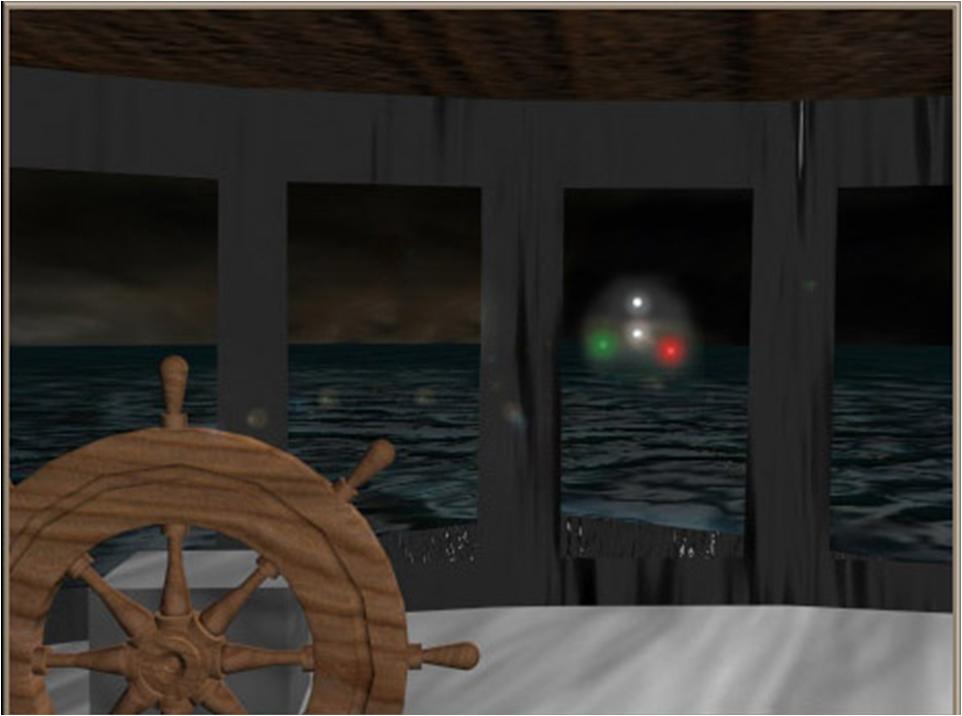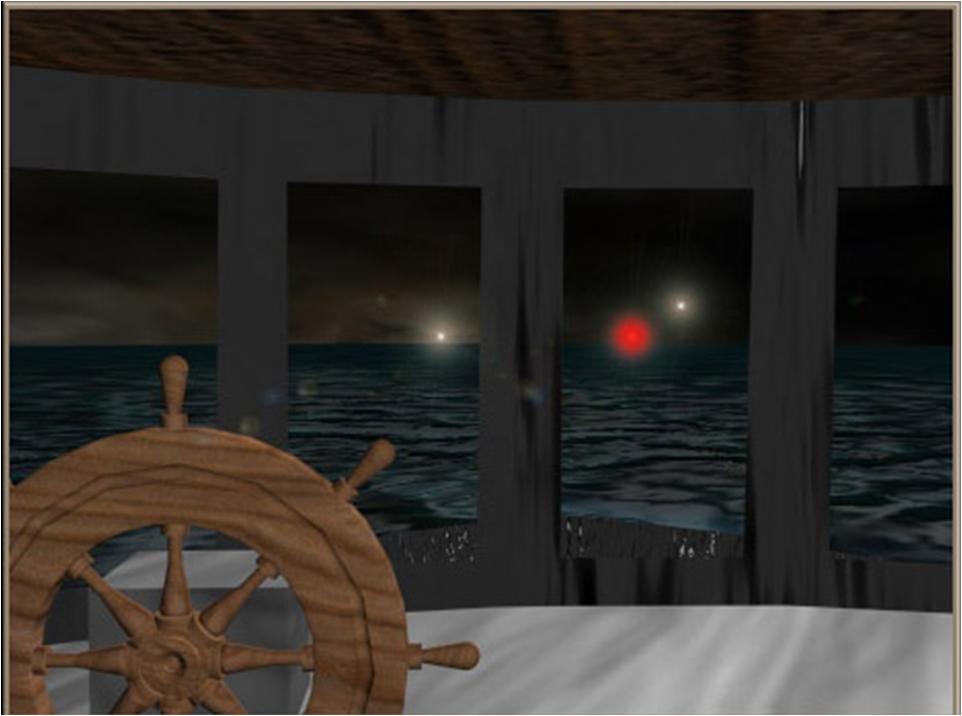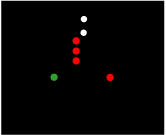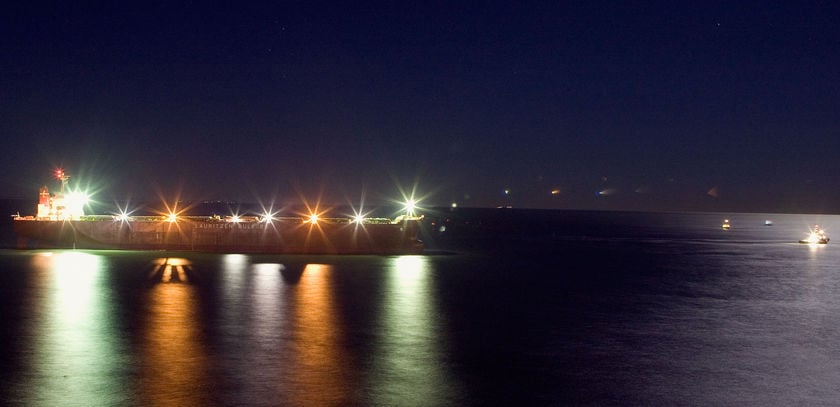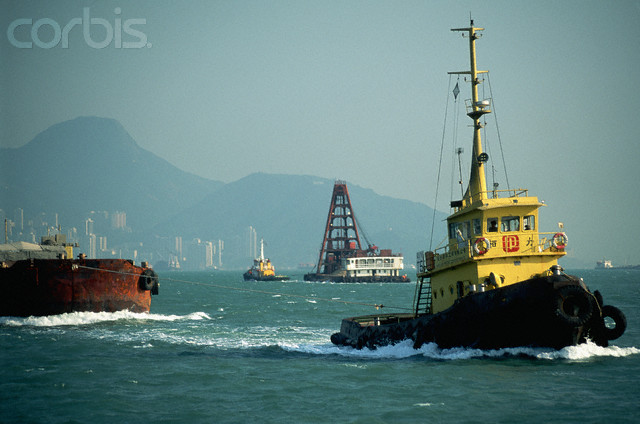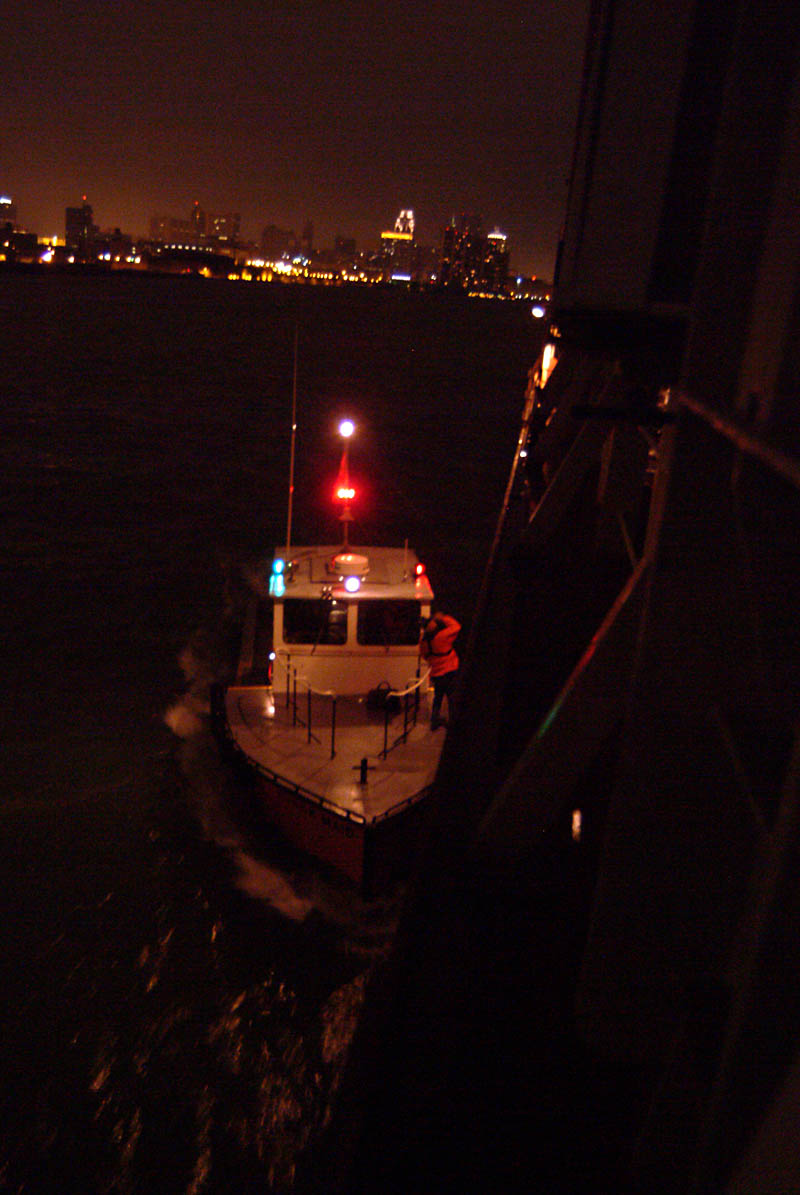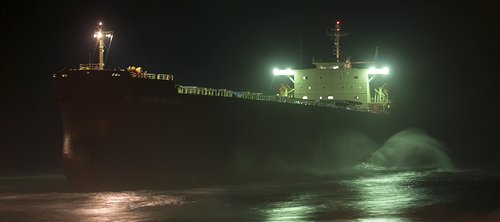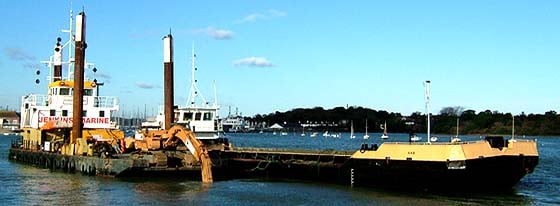Navigation Light Patterns And Collision Regulations Quiz
(168).jpg)
.
Learning about light navigation patterns and collision regulations can be confusing sometimes. However, with the Navigation Light Patterns and Collision Regulations Quiz, we have made it slightly easy for you. The test contains questions related to navigation lights, shapes, and signals. Be it professional seafarer or a beginner, this quiz will definitely help you identify the vessels using visual guides. So, are you enthusiastic about playing the quiz? Shall we begin it now? Go ahead and try to learn some tricks, buddy!
- 1.
What does the night signal shown tell us about the vessel?
- A.
Pilot Vessel
- B.
Sailing Vessel
- C.
Fishing Trawler
- D.
Power driven vessel underway
- E.
Vessel engaged in dredging
Correct Answer
D. Power driven vessel underwayExplanation
The night signal shown indicates that the vessel is a power-driven vessel underway. This means that the vessel is using its engine or motor to propel itself through the water, rather than relying on wind or other means of propulsion.Rate this question:
-
- 2.
What type of vessel is it?
- A.
Hovercraft
- B.
Passenger Ferry
- C.
Power Vessel under 50m
- D.
Ship at Anchor
- E.
Power Vessel over 50M
Correct Answer
E. Power Vessel over 50MExplanation
The correct answer is "Power Vessel over 50M." This is because the question asks about the type of vessel, and out of the given options, a power vessel over 50 meters in length is the most appropriate choice. The other options, such as hovercraft, passenger ferry, power vessel under 50 meters, and ship at anchor, do not fit the description of the vessel being over 50 meters in length.Rate this question:
-
- 3.
A vessel displaying a flashing blue light is __________.
- A.
Transferring dangerous cargo
- B.
A law enforcement vessel
- C.
Engaged in a race
- D.
A work boat
Correct Answer
B. A law enforcement vesselExplanation
A vessel displaying a flashing blue light is typically a law enforcement vessel. Law enforcement vessels often use flashing blue lights to indicate their presence and authority while carrying out their duties, such as enforcing laws, conducting search and rescue operations, or patrolling waterways. This helps to alert other vessels and individuals to their presence and ensures the safety and security of the area they are operating in.Rate this question:
-
- 4.
When power-driven vessels are crossing, a signal of one short blast by either vessel means __________.
- A.
"I intend to leave you on my port side."
- B.
"I intend to hold course and speed."
- C.
"I intend to leave you on my starboard side."
- D.
"I request a departure from the Rules."
Correct Answer
A. "I intend to leave you on my port side."Explanation
In maritime crossing situations between power-driven vessels, a single short blast indicates the intention to leave the other vessel on its port side. This signal communicates the vessel's proposed course of action to avoid a collision, aligning with the rules of navigation to ensure safe passage at sea.Rate this question:
-
- 5.
- A.
Dredge engaged in dredging
- B.
Vessel engaged in fishing by trawling, trawl caught on obstruction
- C.
Dracone or partially submerged vessel or object being towed
- D.
Vessel aground, 50 meters or more in length
Correct Answer
C. Dracone or partially submerged vessel or object being towed -
- 6.
- A.
Vessel engaged in fishing, gear extending more than 150 meters
- B.
Towing astern, tow length 200 meters or less
- C.
Towing astern, tow length more than 200 meters
- D.
Minesweeper, underway and making way
Correct Answer
B. Towing astern, tow length 200 meters or lessExplanation
This answer is correct because it correctly identifies the vessel as towing astern with a tow length of 200 meters or less. The other options do not match the given information in the question.Rate this question:
-
- 7.
Fill in the Blank with the appropriate answer: Rule 19 of Rules of the Road comes into affect when/ in_________.
- A.
Night time and clear visibility
- B.
At all times
- C.
Overtaking a vessel under normal conditions.
- D.
Visibilty is restricted
Correct Answer
D. Visibilty is restrictedExplanation
Rule 19 of Rules of the Road comes into effect when visibility is restricted. This means that the rule applies in situations where the ability to see clearly is limited, such as during fog, heavy rain, or other conditions that impair visibility. In these circumstances, specific guidelines and precautions need to be followed to ensure safety while navigating on the road or waterways.Rate this question:
-
- 8.
Please read and evaluate whether the the following statement is true or false regarding rule 19 of the rules of the road: an alteration of course to starboard for a vessel forward of the beam, other than for a vessel being overtaken; shall be avoided.
- A.
True
- B.
False
Correct Answer
B. FalseExplanation
an alteration of course to PORT for a vessel forward of the beam, other than for a vessel being overtaken; .....Go to port, go to court.Rate this question:
-
- 9.
Fill in the blank with the appropriate answer: Every vessel shall at all times maintain a proper look-out by sight and hearing as well as by _____________ appropriate in the prevailing circumstances and conditions so as to make a full appraisal of the situation and of the risk of collision.
- A.
ARPA, ECDIS, and Radar settings.......
- B.
Appointing more people to lookout.......
- C.
All available means........
- D.
Blasting the fog horn at intervals....
Correct Answer
C. All available means........Explanation
The correct answer is "all available means". This means that every vessel should use all possible methods and resources, such as visual observation, listening for sounds, and utilizing any technological equipment like ARPA, ECDIS, and Radar settings, to maintain a proper lookout. This ensures that the vessel is aware of its surroundings, can assess the situation accurately, and can effectively avoid any potential collisions.Rate this question:
-
- 10.
- A.
Vessel Restricted in Her Ability To Maneuver conducting underwater operations where an obstruction exists
- B.
Trawling Vessel Hauling Nets
- C.
Vessel engaged in pilotage duties
- D.
Vessel Constrained by her Draft
- E.
Vessel Aground
Correct Answer
D. Vessel Constrained by her DraftExplanation
The correct answer is "Vessel Constrained by her Draft." This means that the vessel is restricted in its ability to maneuver because it has a limited depth due to its draft. A vessel's draft refers to the distance between the waterline and the lowest point of the vessel's hull. When a vessel is constrained by its draft, it cannot navigate in areas where the water is too shallow for its draft, limiting its maneuverability.Rate this question:
-
- 11.
- A.
Vessel not under command
- B.
Power Vessel, > 50m in length
- C.
Vessel at anchor
- D.
Vessel aground
- E.
Vessels Restricted in Their Ability to Maneuver
Correct Answer
D. Vessel agroundExplanation
The correct answer is "Vessel aground." This means that the vessel is stuck or stranded on the ground or a shoal, unable to move or maneuver. It is not under command and is immobilized due to being stuck on the seabed or another obstruction.Rate this question:
-
- 12.
What does the day signal shown tell us about the vessel?
- A.
Power Driven Vessel Underway
- B.
Vessel engaged In Towing
- C.
Vessel Underway, Not Making Way
- D.
Vessel Engaged in Trawling
Correct Answer
D. Vessel Engaged in TrawlingExplanation
The day signal for a vessel engaged in trawling typically consists of two cones with their apexes together. This unique day signal indicates that the vessel is actively engaged in fishing with nets (trawling) and might have restricted maneuverability. Understanding these signals is crucial for safe navigation and avoiding potential collisions with vessels performing specific activities.Rate this question:
-
- 13.
Please Read And Correct What Is Wrong With Rule 27 Noted Below: (a) A vessel not under command shall exhibit: (i) two all-round red lights in a vertical line where they can best be seen; (ii) Three balls or similar shapes in a vertical line where they can best be seen; (iii) when making way through the water, in addition to the lights prescribed in this paragraph, sidelights and a stern light.
- A.
Vessel Not Under Command Always Shows 3 All Round Red Lights In a Vetical Line and Not Two.
- B.
Vessel Not Under Command Should Should Show Two Balls In a Vertical Line.
- C.
One Ball Should Be Displayed to Indicate Vessel Is Not Under Command.
- D.
Nothing is wrong - Rule 27 Noted Above Is Correct
Correct Answer
B. Vessel Not Under Command Should Should Show Two Balls In a Vertical Line.Explanation
The explanation for the given correct answer is that a vessel not under command should show two balls in a vertical line, not three. One ball should be displayed to indicate that the vessel is not under command.Rate this question:
-
- 14.
What type of vessel exhibits the navigation light pattern of a green light on the starboard side and a red light on the port side when underway?
- A.
Power-driven vessel
- B.
Finishing vessels
- C.
Fishing vessel
- D.
RoRo vessel
Correct Answer
A. Power-driven vesselExplanation
A power-driven vessel, when underway, exhibits a green light on the starboard (right) side and a red light on the port (left) side. This standard navigation light pattern helps other vessels determine the direction in which the power-driven vessel is moving and ensures safe navigation, especially at night or in poor visibility conditions. This light pattern is common to all power-driven vessels regardless of their specific type or function.Rate this question:
-
- 15.
Please Review Rule 26 And Fill In The Blanks: (c) A vessel engaged in fishing, other than trawling, shall exhibit: (i) two all-round lights in a vertical line, the upper being red and the lower white, or a shape consisting of two cones with apexes together in a vertical line one above the other; (ii) when there is outlying gear extending more than 150 metres horizontally from the vessel, an all round white light or a ________ upwards in the direction of the gear; (iii) when making way through the water, in addition to the lights prescribed in this paragraph, sidelights and a sternlight.
- A.
Cylinder
- B.
Diamond
- C.
Cone
- D.
Star
Correct Answer
C. ConeExplanation
A vessel engaged in fishing, other than trawling, is required to exhibit two all-round lights in a vertical line, with the upper light being red and the lower light being white. Alternatively, the vessel can display a shape consisting of two cones with apexes together in a vertical line. Additionally, when there is outlying gear extending more than 150 meters horizontally from the vessel, the vessel must display an all-round white light or a cone pointing upwards in the direction of the gear. Therefore, the correct answer is "Cone" as it represents the required light or shape to be displayed in this situation.Rate this question:
-
- 16.
Fill in the Blank: A power-driven vessel underway but stopped and making no way through the water shall sound at intervals of not more than 2 minutes _______ prolonged blasts in succession with an interval of about 2 seconds between them.
- A.
1
- B.
3
- C.
2
- D.
4
Correct Answer
C. 2Explanation
A power-driven vessel underway but stopped and making no way through the water shall sound at intervals of not more than 2 minutes two prolonged blasts in succession with an interval of about 2 seconds between them.Rate this question:
-
- 17.
Select the answer that best describes this vessel?
- A.
Fishing vessel
- B.
Power driven vessel under 50m
- C.
Pilot vessel
- D.
Law enforcement vessel
Correct Answer
C. Pilot vesselExplanation
A pilot vessel is a type of vessel that is used to transport pilots to and from ships in order to assist with navigation in ports or other restricted areas. These vessels are typically smaller in size and have specialized equipment and personnel to safely guide larger ships. They are easily recognizable by their distinctive markings and lights.Rate this question:
-
- 18.
What situation is this vessel is in based on the lights displayed?
- A.
Vessel constrained by draft
- B.
Vessel not under command
- C.
Vessel at anchor
- D.
Vessel aground
Correct Answer
D. Vessel agroundExplanation
The vessel is displaying the lights for being aground, which means it is stuck or stranded on the bottom of the water and unable to move. This could be due to various reasons such as running aground on a sandbar or hitting a submerged object. The lights are displayed to indicate its status and warn other vessels of its immobility.Rate this question:
-
- 19.
Please determine what side of this dredger is it safe to pass on?
- A.
Pass on the side with two diamonds
- B.
Pass on the side with two black balls
- C.
Neither side is safe to pass on, unless a 1nm buffer is maintained when passing.
Correct Answer
A. Pass on the side with two diamondsExplanation
Passing on the side with two diamonds is safe because diamonds indicate that it is a safe passage. The presence of two diamonds suggests that there is enough space for another vessel to pass safely without any risk of collision. Therefore, passing on this side ensures the safety of both vessels.Rate this question:
-
Quiz Review Timeline +
Our quizzes are rigorously reviewed, monitored and continuously updated by our expert board to maintain accuracy, relevance, and timeliness.
-
Current Version
-
Sep 16, 2024Quiz Edited by
ProProfs Editorial Team -
Jan 26, 2009Quiz Created by
Burnabyapple
- Continent Quizzes
- Earth Science Quizzes
- Easy Geography Quizzes
- Environment Quizzes
- Fictional Geography Adults Quizzes
- Five Themes Of Geography Quizzes
- Geology Quizzes
- Human Geography Quizzes
- Imperialism Quizzes
- Island Quizzes
- Land Quizzes
- Latitude And Longitude Quizzes
- Location Quizzes
- Nation Quizzes
- Nature Quizzes
- Ocean Quizzes
- Physical Geography Quizzes
- Planet Quizzes
- Regional Geography Quizzes
- Remote Sensing Quizzes
- World Quizzes
- World Geography Quizzes
 Back to top
Back to top



